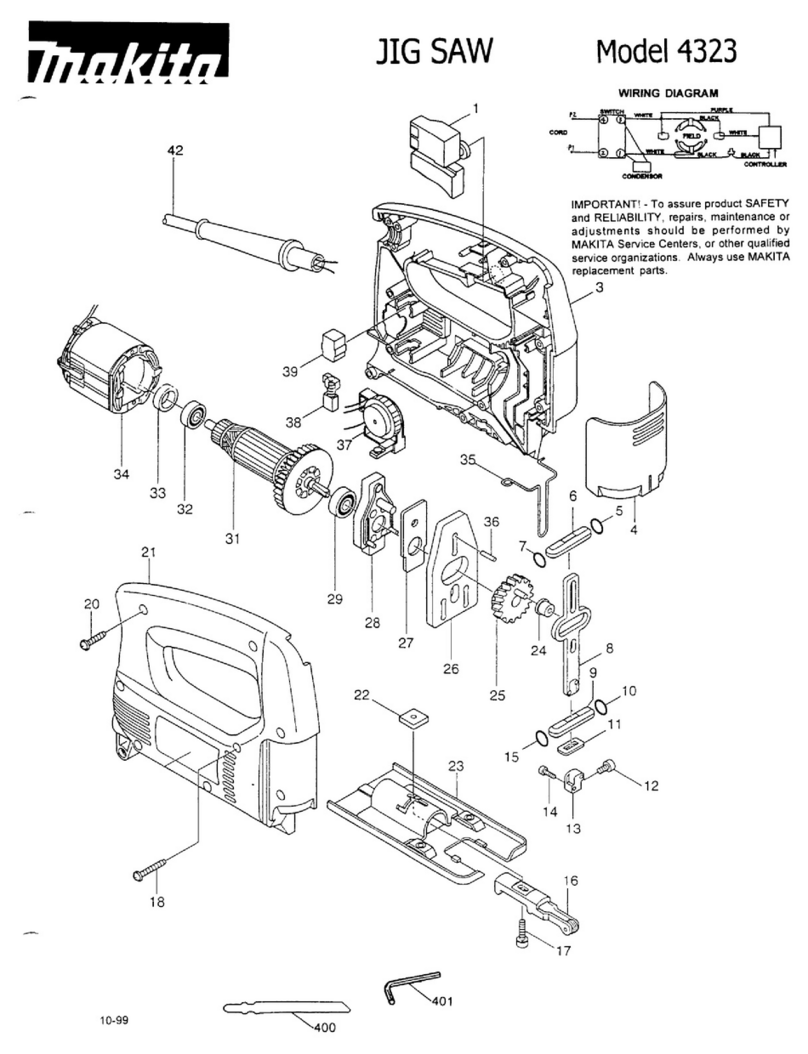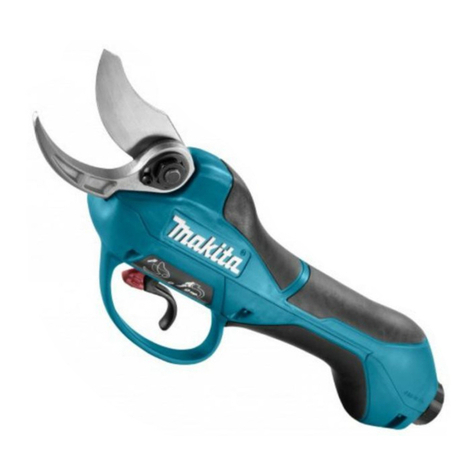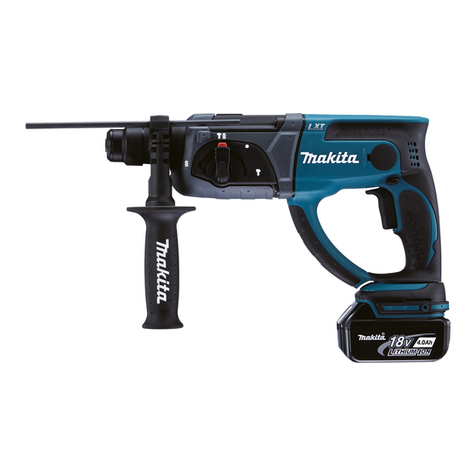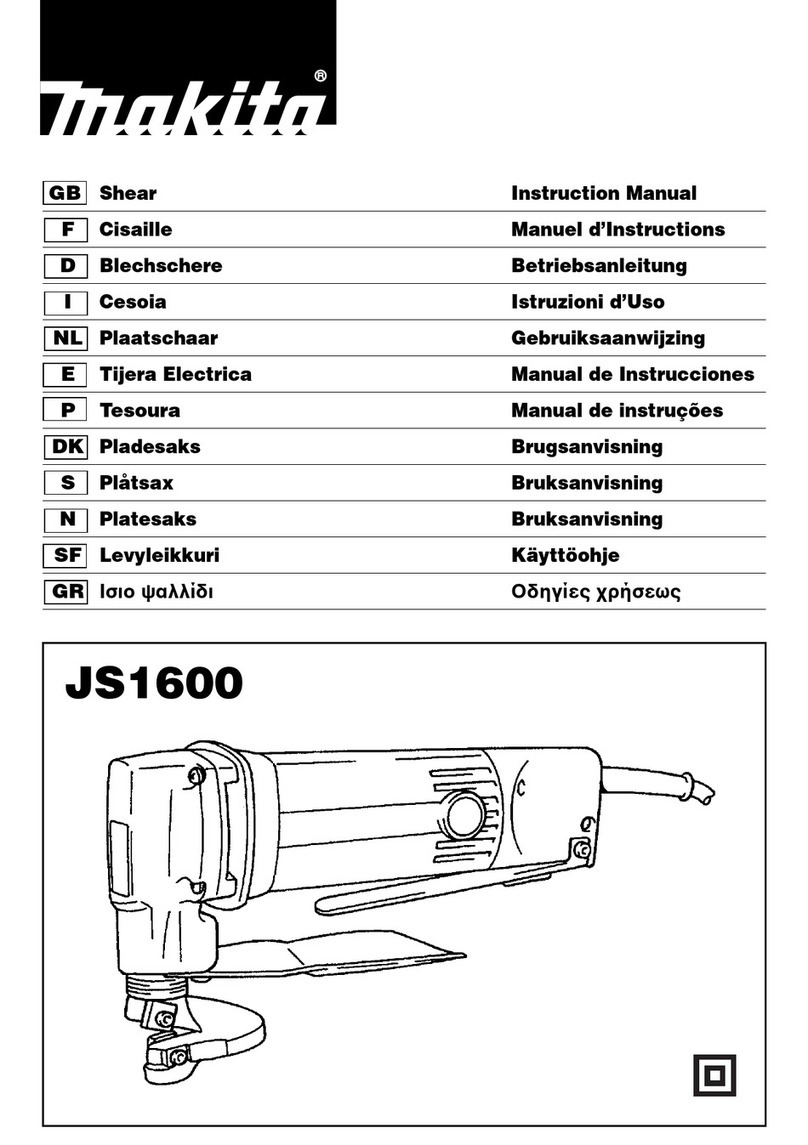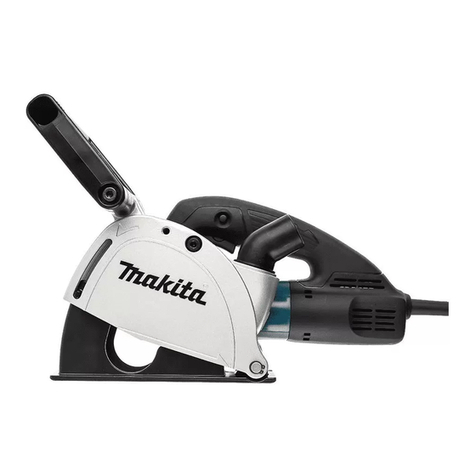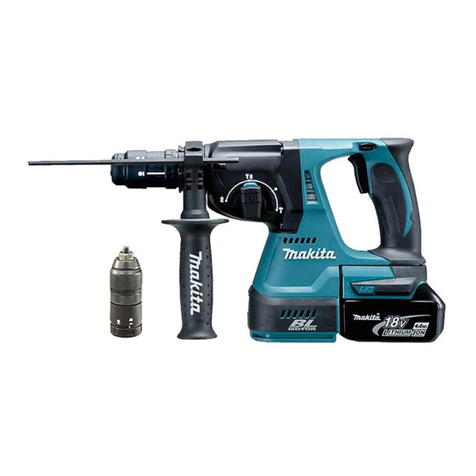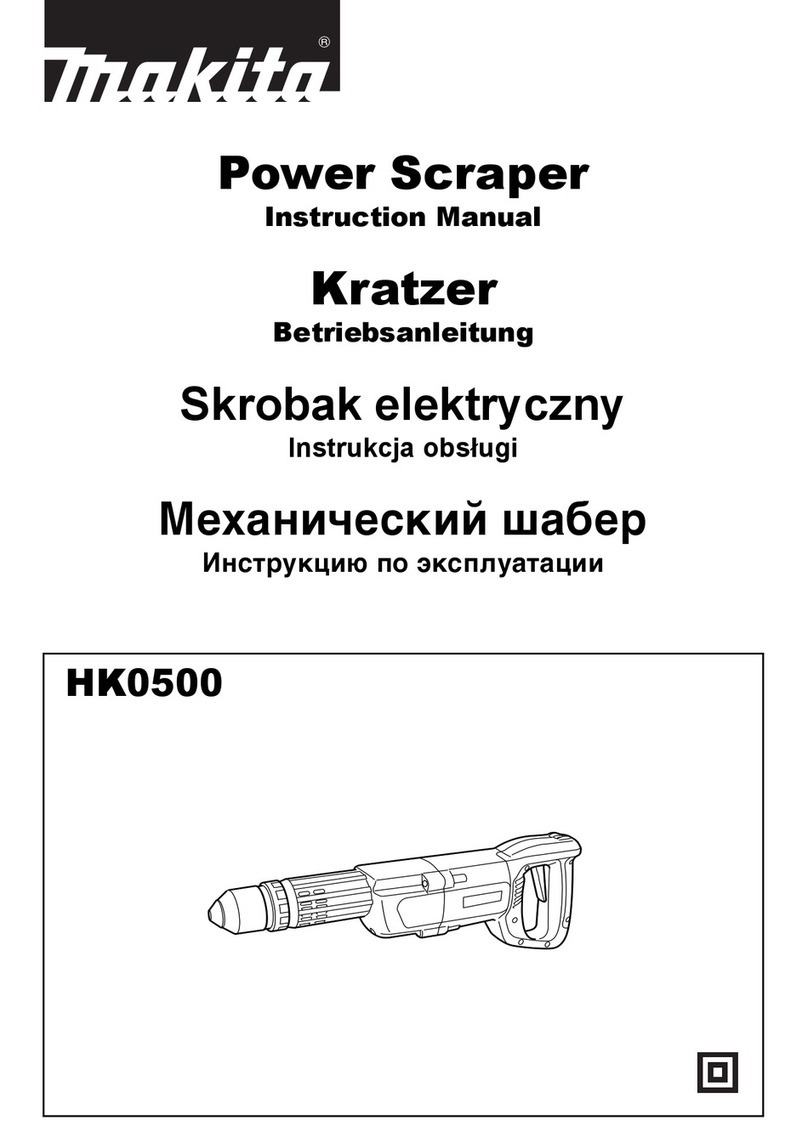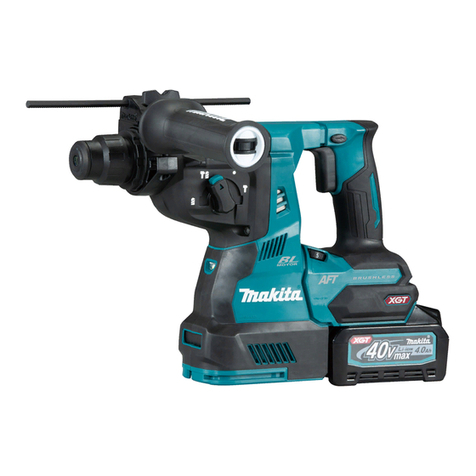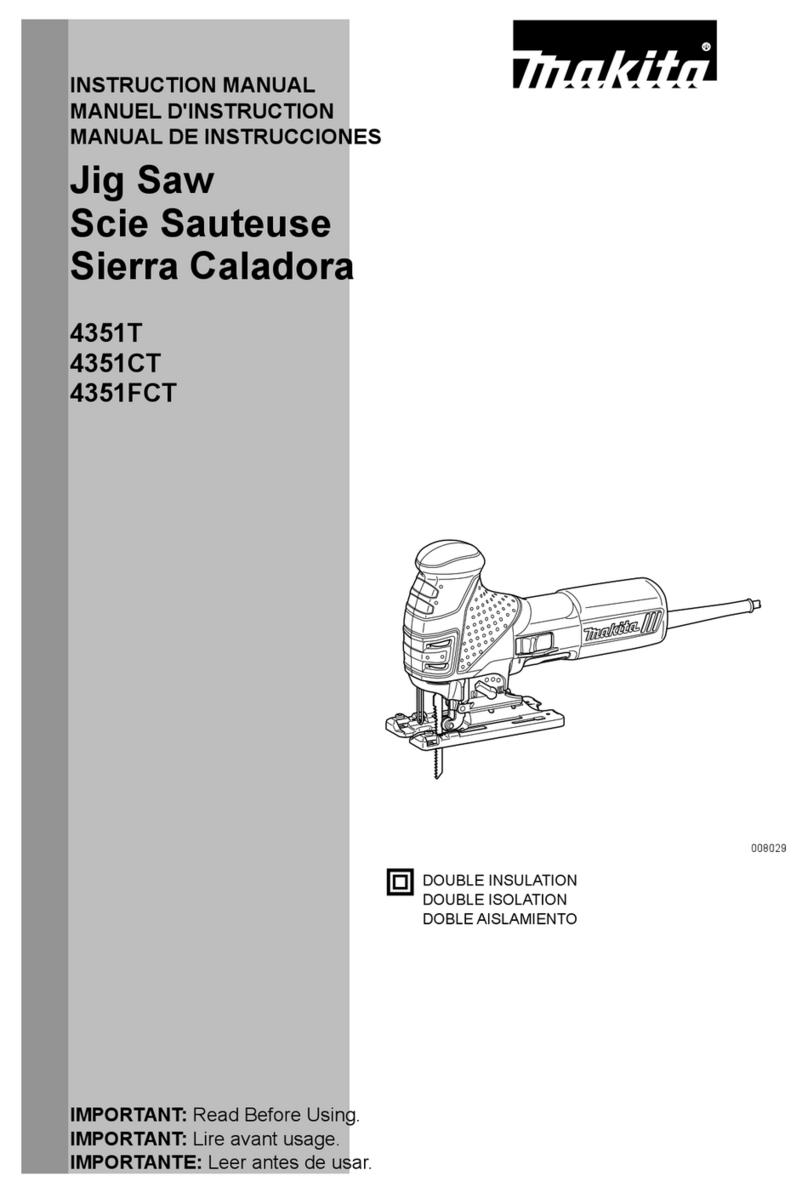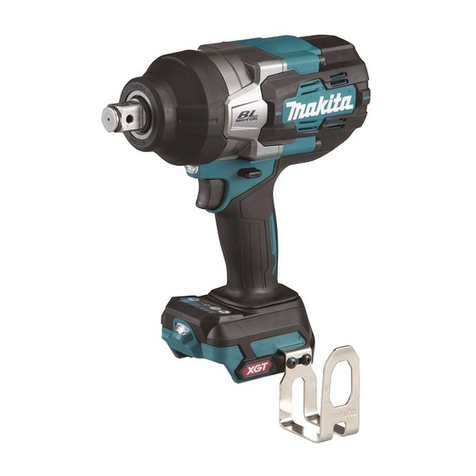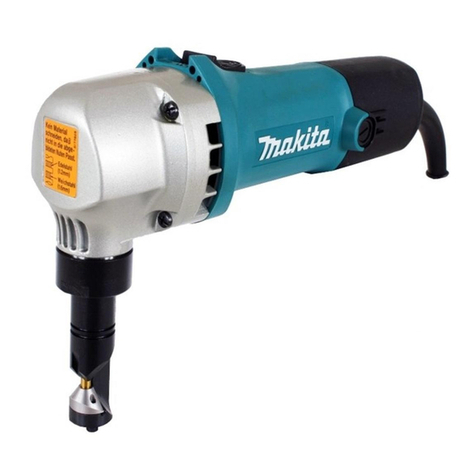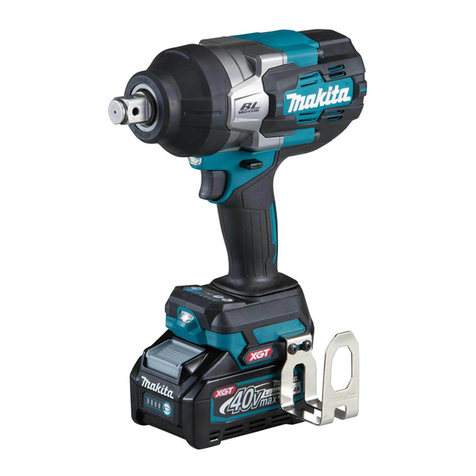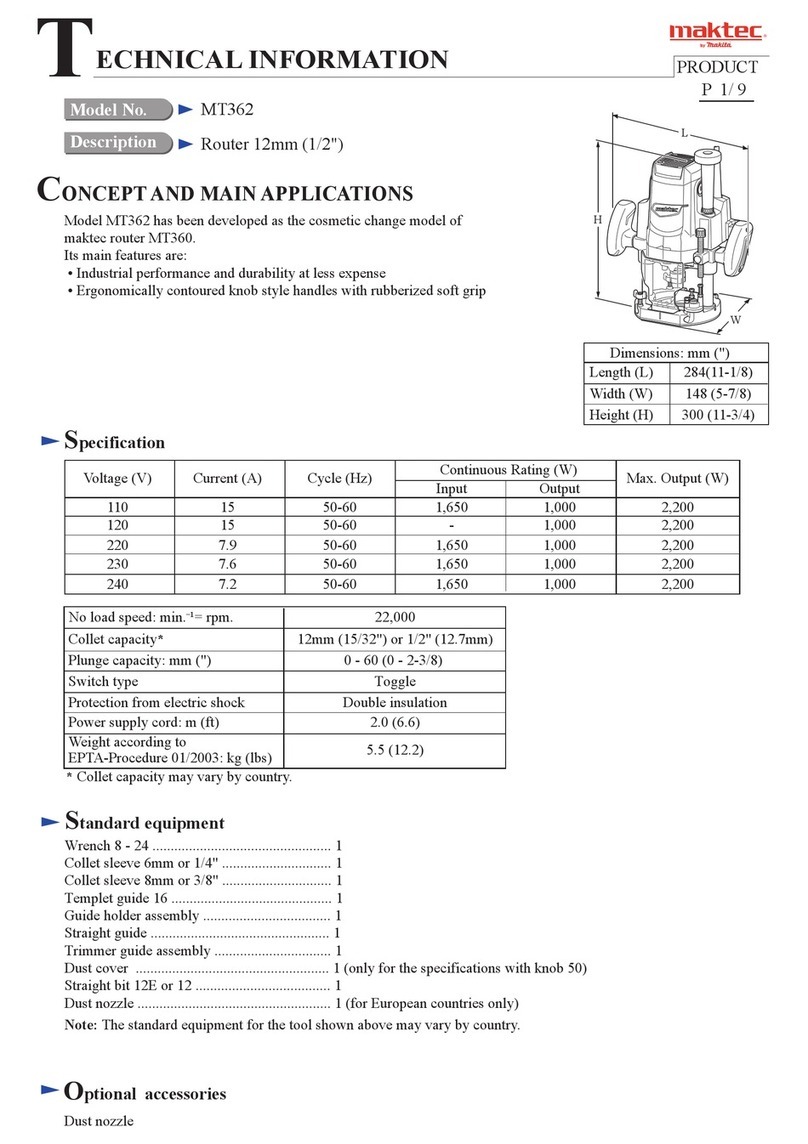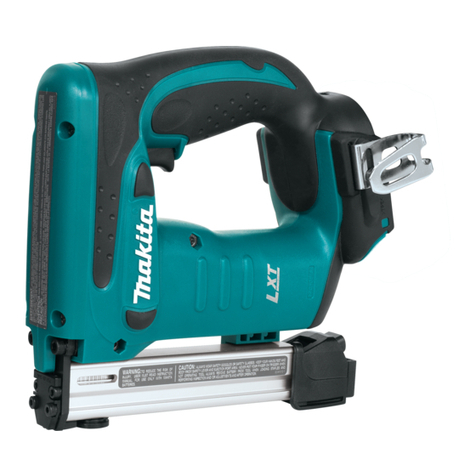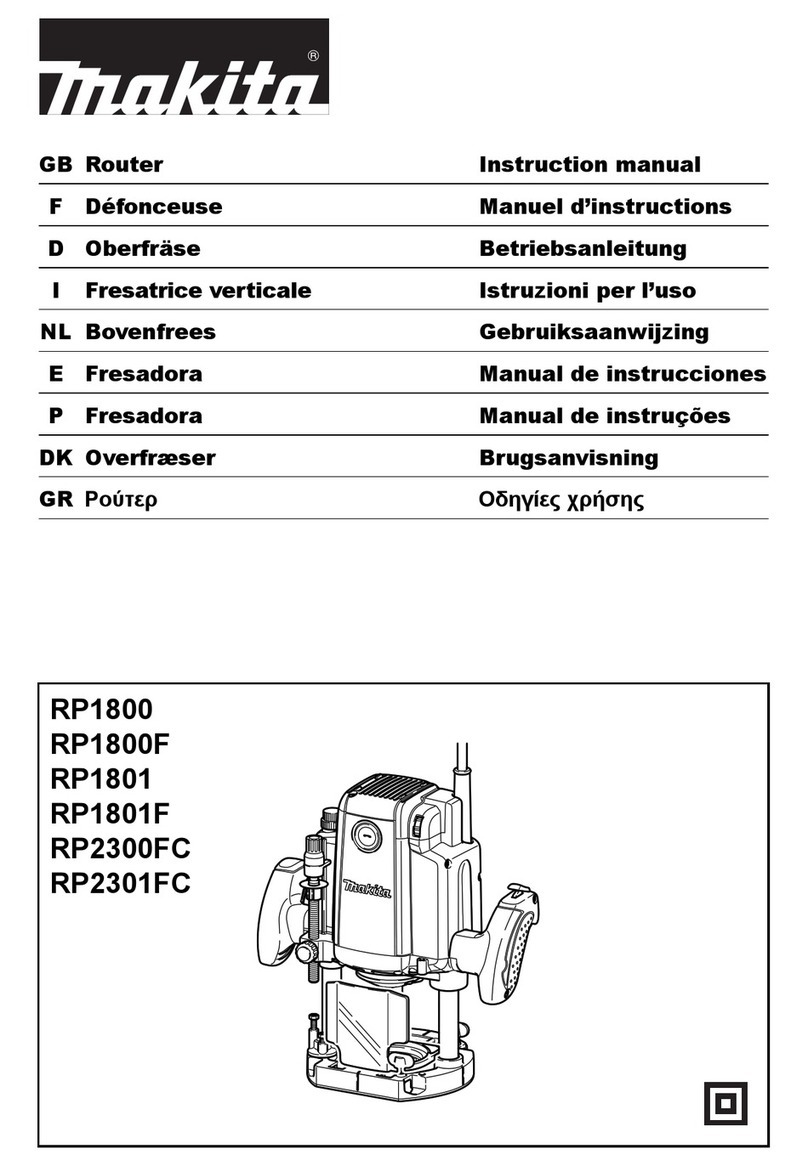ENGLISH
Explanation
of
general vim
8
Tighten
9
Loosen
io
Stopper pole
11
Adjustinghex boR
12
Nylon nut
13
Stopper block
14
Hexnut
1
Lockscrew
2
Locklever
3
Label
4
Adjustinghob
5
Depthpointer
6
Fast-feedbutton
7
Locklever
15
Workpiece
16
ail
revolvingdirection
17
Feeddirection
18
View from the lop
of
the tool
19
Correct bit feed direction
Replacing the
base
C
AT10N:
Always
be
sure that the
tool
is
switched
off
and
unpluggedbeforeremoving
or
installingthe base.
Removing
the
existing
base
For
Model
RPllOOIRPllOl
(Fig.
1)
Loosen the
I&
screw. Turn the
motor
unit counter-
C!cdwiise
while holding
the
base.
Tum it untilthe pin
in the base is disengaged
from
the groove in the
motor
unit.
Lift
the
motor
unit free
from
the base.
For Model RF1100/RF1101 (Fig.
2)
Open
the
lo&
lever. Turn the motor unaCOUnterdOck-
wise while holdingthe base. Turn
it
until the pinin the
base
ki
disengaged
from
the groove inthe
motor
Unit.
Liftthe motor unit
free
from the base.
Instailing
plunge
router
base
place the plunge router basekeepingthe labelfront.
Insert
the motor unit into the base keeping the cord
lelt side. (Fig.
3)
Rotatethe
motor
unit dockwise until it
stops.
Tighten
the lock screw securely. (Fig.
4)
HOW
TO
USE
Adjusting
depth
of
cut
(Fig.
5)
CAUTION:
Always be
sure
that the fool
is
switched
off
and
unplugged
before
adjuslingthe depth ofCut.
Place
the
tool
on a flat
surface.
Press the lock lever
down andlowerthe tool body untilthe bit
just
touches
the
flat
surface. Release the lock lever
to
holdthe tool
body down. Turn [he fast-feed button cuunterdock-
wise
to
loosen. While pressing the fast-feed button.
lower the stopper pole until
it
makes contact with the
adjustinghex bolt. Align the depth pointerwththe
"0"
graduation. The depth
of
cut
isindicated on the scale
by the depth pointer.While pressing the fast-feedbut-
ton.
raise the stopper pole until the desired depth
Of
Cut
is
obtained. Minute depth adjustments Can be
obtained
by
turning the adjusting knob
(1.6
mm Per
turn). Alter adjusting the depth
of
cut. tUrn the fast-
feed button clockwise
to
fasten the stopper Pole
firmly.
Now.
your
predetermined depth
of
cut
can be
obtained by pressingthe lock lever and then lowering
the
lool
body
until the stopper pole makes CCntaCl
with ihe adjustinghex
bolt
of
the slopper block.
Nylon
nut
(Fig.
6)
CAUTION:
DO
not lower the nylon nut
too
low
of
the bit will
pro-
trude dangerously.
6y
turning the nylon nut. the upper limit
of
the tool
body
can be adjusted. When the tip of the bit
is
retracted more lhan required
in
relation
to
the base
plate surface. turn the nylon nut to lower the upper
limit.
CAUTION:
Since excessive cutting may cause overload
of
the
motor
or
difficulty
incontrollingthe tool, the depth
of
cui should not be more than
15
mm at a passwhen
cullinggrooveswith
an
8
mmdiameter bit.
When cvtting grooves with
a
20
mm diameter bit.
the depth
of
cut
shouldnot bemore lhan
5
mmat a
Pa.
For
extradeep grooving operation.
make
two
or
three passeswith progressivelydeeper bit settings.
Stopper
block
(Fig.
7)
The stopper block has three adjusting hex bolts
which
raise
or
lower
0.8
mm per turn. You can easily
obtain three different depths
of
cut using these
adjusting hex bolts without readjusting the stopper
pole.
Adjust :he lowest hex bolt to obtain the deepest depth
of
cut. Adjust the two remaining hex
bolts
to
obtain
shallower depths
of
cut.
The differences in height of
these hex bolts are equal
lo
fhedifferencesin depths
of
cu1.
To
adjust the hex bolts,
first
loosen the hex nuts on
the hex bolts with the wrench and then turn the hex
boils. After obtaining the desired position. lighlen the
hex nuts while holding the hex
bolts
in that desired
position.
The stopper block
is
also
convenient
for
makingthree
passes with progressively deeper
bit
setlings when
cutlingdeep grooves.
3
